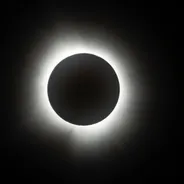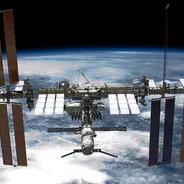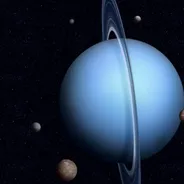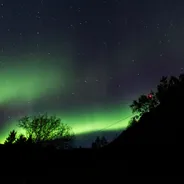Outside of Hollywood movies, meteors are never really seen to pose an existential threat. The idea of space rock raining down on us - or indeed one huge piece of it flattening a city - is truly terrifying. But this abstract idea of extraterrestrial jeopardy coming our way is usually only realised in fictional form.
According to the head of NASA, Jim Bridenstine, this is exactly why this issue is not being taken seriously. "We have to make sure that people understand that this is not about Hollywood. It's not about movies," Bridenstine stated this week, adding that "the reason it's important for NASA to take this seriously is something you call the 'giggle factor'".
However, a meteor which exploded over Russia’s Chelyabinsk region in 2013 was no laughing matter. It injured more than 1,400 people and caused damage to thousands of buildings. "I wish I could tell you that these events are exceptionally unique, but they are not," Bridenstine said. The meteor was travelling at around 64,000 kph and measured around 65 feet in diameter.
Watch the terrifying compilation below of the Chelyabinsk meteor causing “sonic boom” in RussiaTo the gathered crowd at the International Academy of Astronautics' Planetary Defense Conference, Bridenstine explained that certain scientific theories seem too ridiculous to be taken seriously. On the contrary, he argues, the threat of a meteor needs our undivided attention.
The purpose of the conference was to discuss potential ways of defending the planet against such threats. As explained via a statement on their website the conference brought together “world experts to discuss what’s known about potentially hazardous asteroids and comets and how we might mount a defensive action in case one of these is found to be on a collision course with Earth. The conference, the 6th in a series of International Academy of Astronautics (IAA) conferences on planetary defense, reflects the increasing recognition of the potential threat these objects present to our planet as the list of threatening objects continues to increase.”

Bridenstine stated that NASA’s modelling systems had predicted that these occurrences would happen "about once every 60 years" and noted that, on the same day of the Chelyabinsk meteor explosion, a larger asteroid came within 27,000 kilometres of Earth.
However, just two days ago, after Bridenstine had delivered his speech, another asteroid came with just 26,000 kilometres of the planet. This Near Earth Object (NEO) flew by at around 1.23am Eastern time (7.23am UK time). It was first spotted by astronomers on 29 May and dubbed Asteroid 2019 KA4. It is believed to have shot past at 7.16 km per second or 25,776 kph.
Astronomers study such activity and have a number of different definitions. As Australia’s Swinburne University explains: “Asteroids whose orbits bring them relatively close to the Earth – perihelion distances of less than 1.3au [astrononical unit] – are known, not surprisingly, as Near Earth Asteroids.”

“Alternatively called ‘Near Earth Objects’, as some of them are thought to be the nuclei of extinct comets rather than asteroids, the majority of NEAs originate in the main asteroid belt and are perturbed inward through either collisions between asteroids or the gravitational influence of Jupiter.”
One astronomical unit measures around 150 million kilometres - the distance from Earth to the sun. NASA referred to the 2013 Chelyabinsk meteor as a “wake-up call” as its preliminary systems for detecting such an event had failed.
Spacecraft have visited several NEOs as many have an Earth-like orbit. However, they don’t have enough gravity for astronauts to walk on them. Many asteroids are caught in Earth’s orbit but pose no threat. As for the likelihood of a large asteroid impacting Earth, there is a lot of evidence to look at.

“There are now over 100 ring-like structures on Earth recognized as definite impact craters,” explains NASA’s Jet Propulsion Laboratory (JPL). “Most of them are not obviously craters, their identity masked by heavy erosion over the centuries, but the minerals and shocked rocks present make it clear that impact was their cause.”
Chaired by Dr David Morrison, a group at NASA Ames Research Center estimated that there are around 2,100 asteroids larger than one kilometre in diameter and likely around 320,000 larger than 1,000 metres. This was the size of the asteroid which caused the two-kilometre-wide Arizona Meteor Crater.

The group concluded that an asteroid between one and two kilometres in diameter could “degrade the global climate, leading to widespread crop failure and loss of life”. These cataclysmic events are thought to occur several times per million years. An even larger one, of five kilometres in diameter, could cause mass extinctions.
“This all sounds pretty scary," NASA admit. "However, as noted earlier, no human in the past 1000 years is known to have been killed by a meteorite or by the effects of one impacting. (There are ancient Chinese records of such deaths.)” NASA then add: “It's too late for the dinosaurs, but today astronomers are conducting ever-increasing searches to identify all of the larger objects which pose an impact danger to Earth.”

Perhaps the edge can be taken off Bridenstine's warning with the knowledge that he is more of a politician than a scientist. A close ally of Donald Trump, his ascent to Administrator of NASA was fraught with controversy and it was a 50-49 vote which saw him take the seat.
Furthermore, there is a Planetary Defense project at NASA and it is hoped that any genuine threat would be detected early enough to evacuate the affected area and mobilise some form of interception mission. However, much of the work carried out so far is largely theoretical. On the whole, we are sitting ducks.












